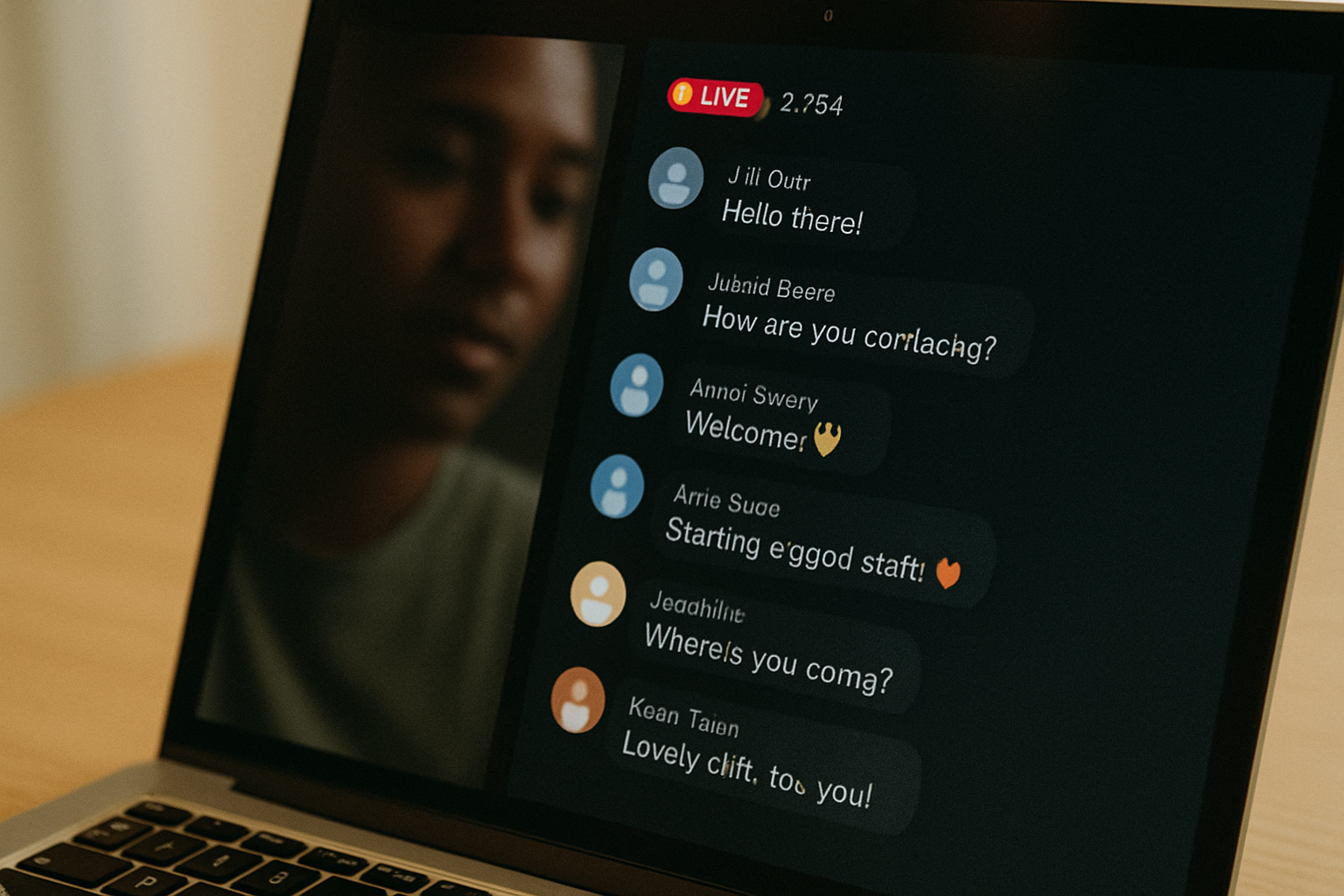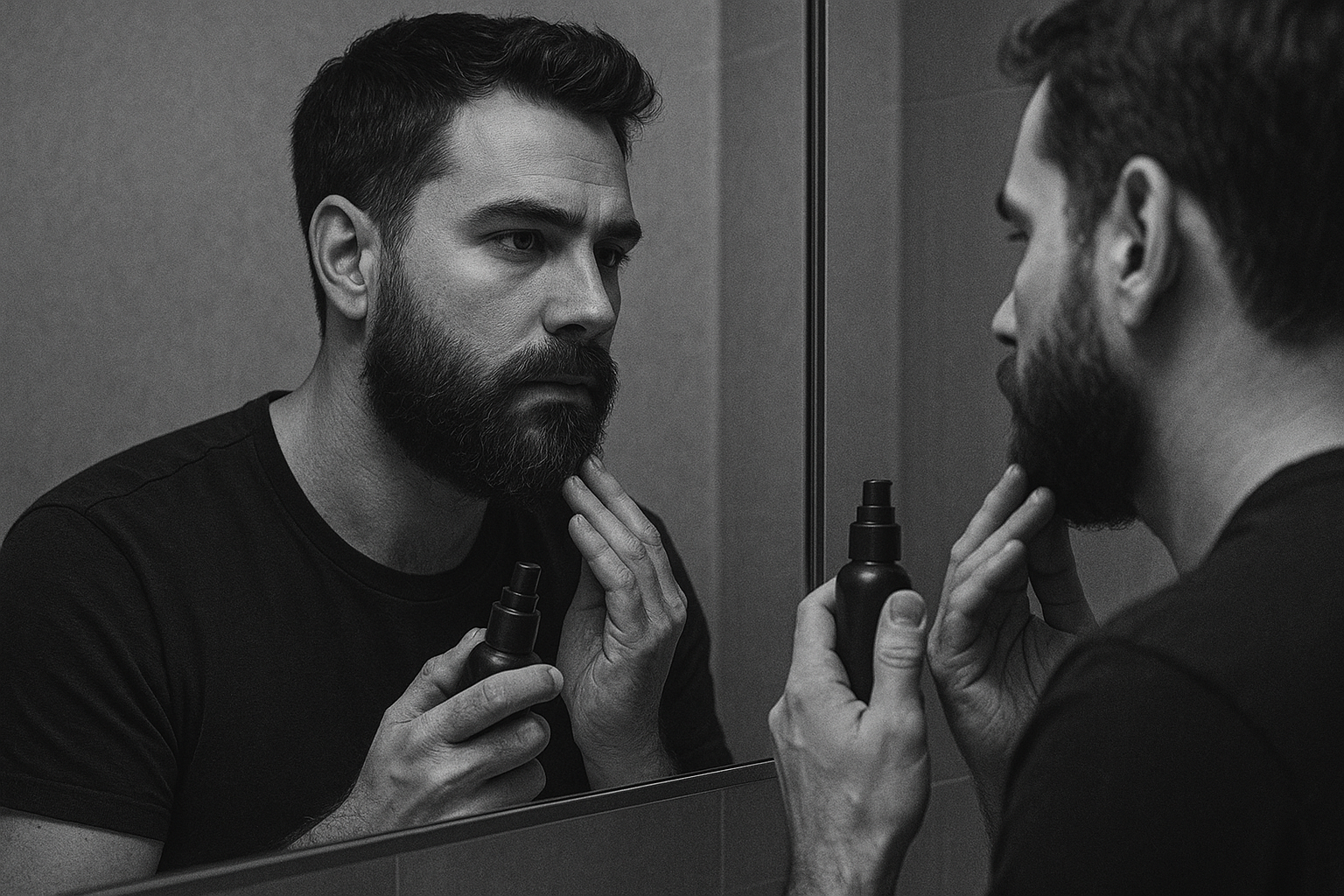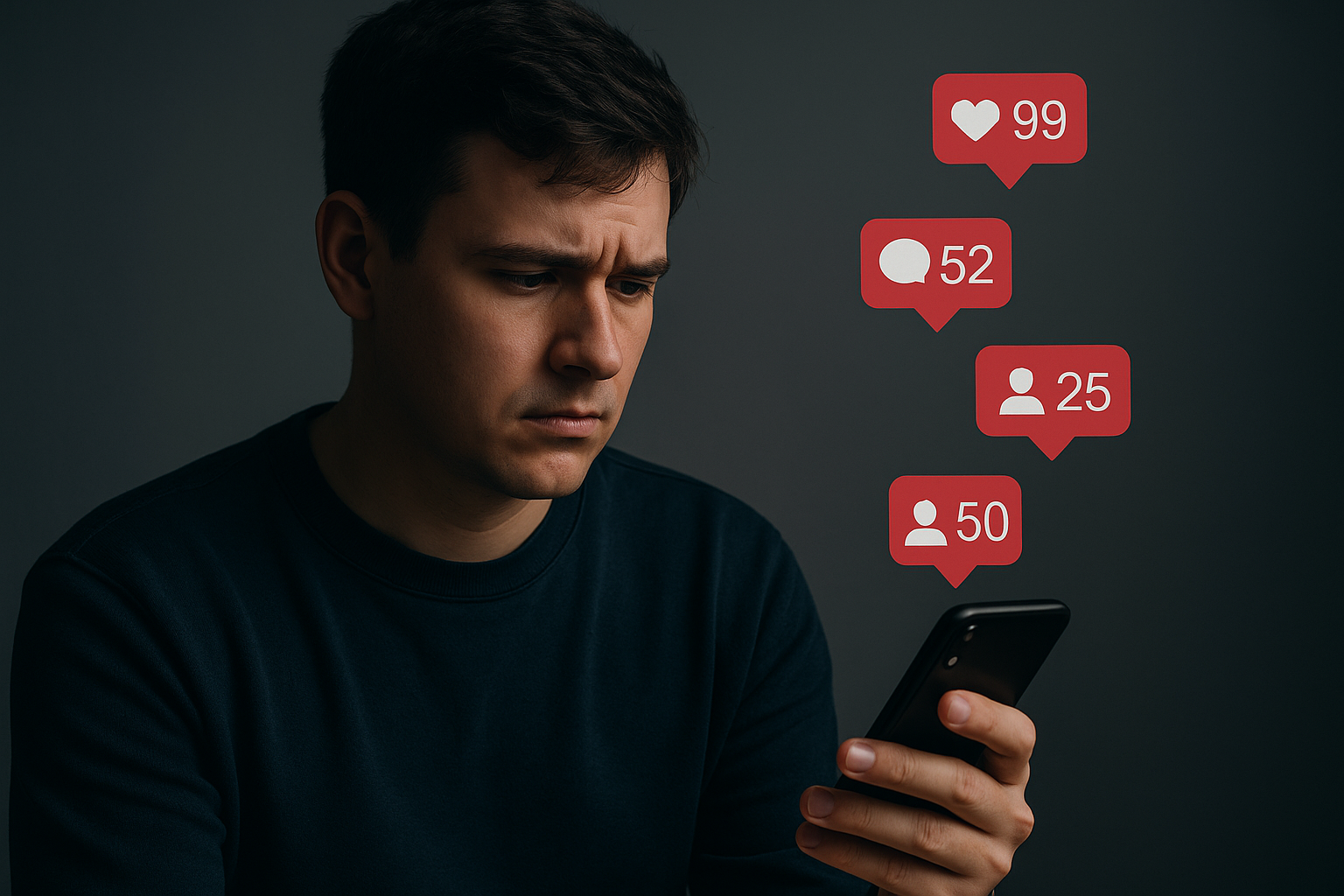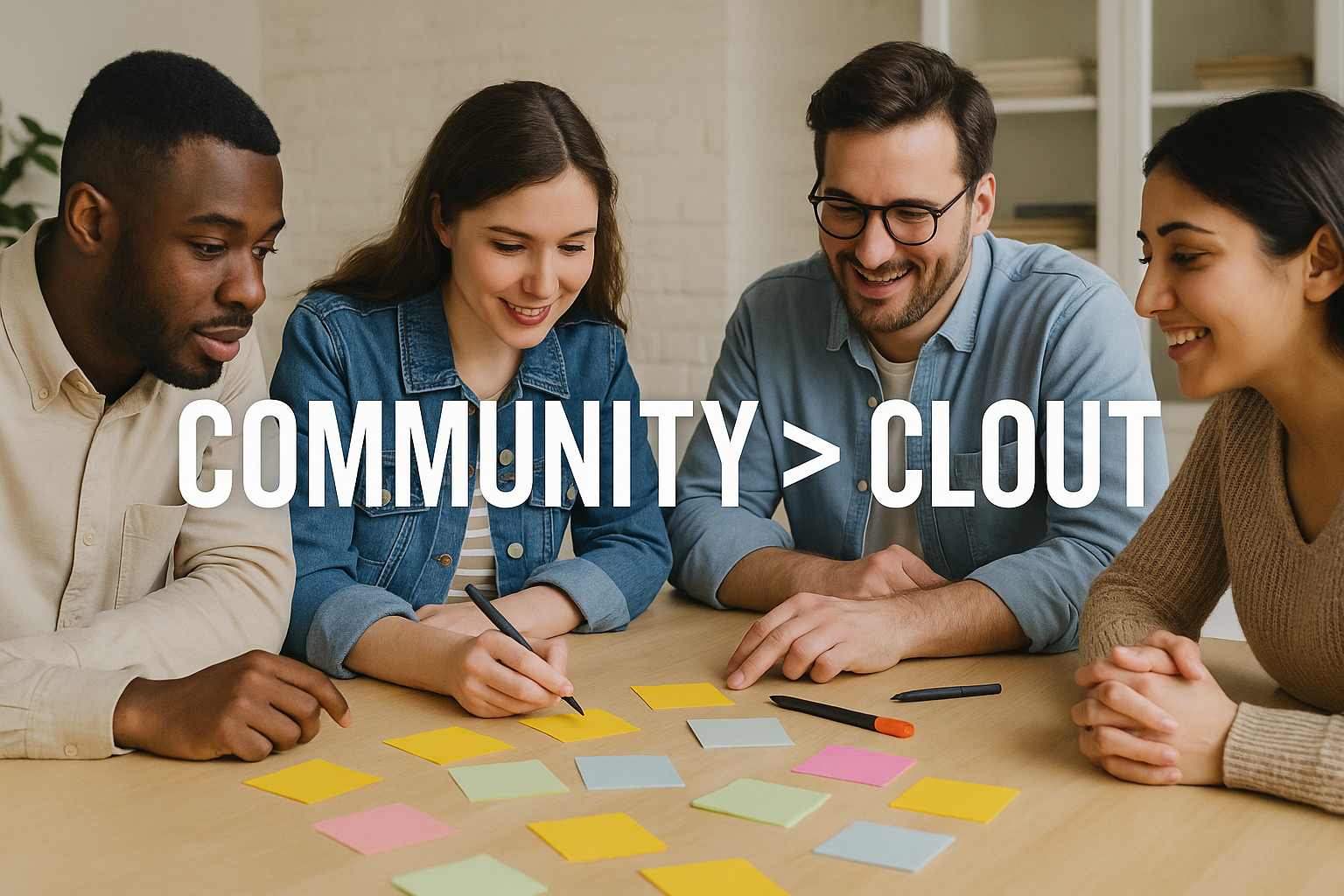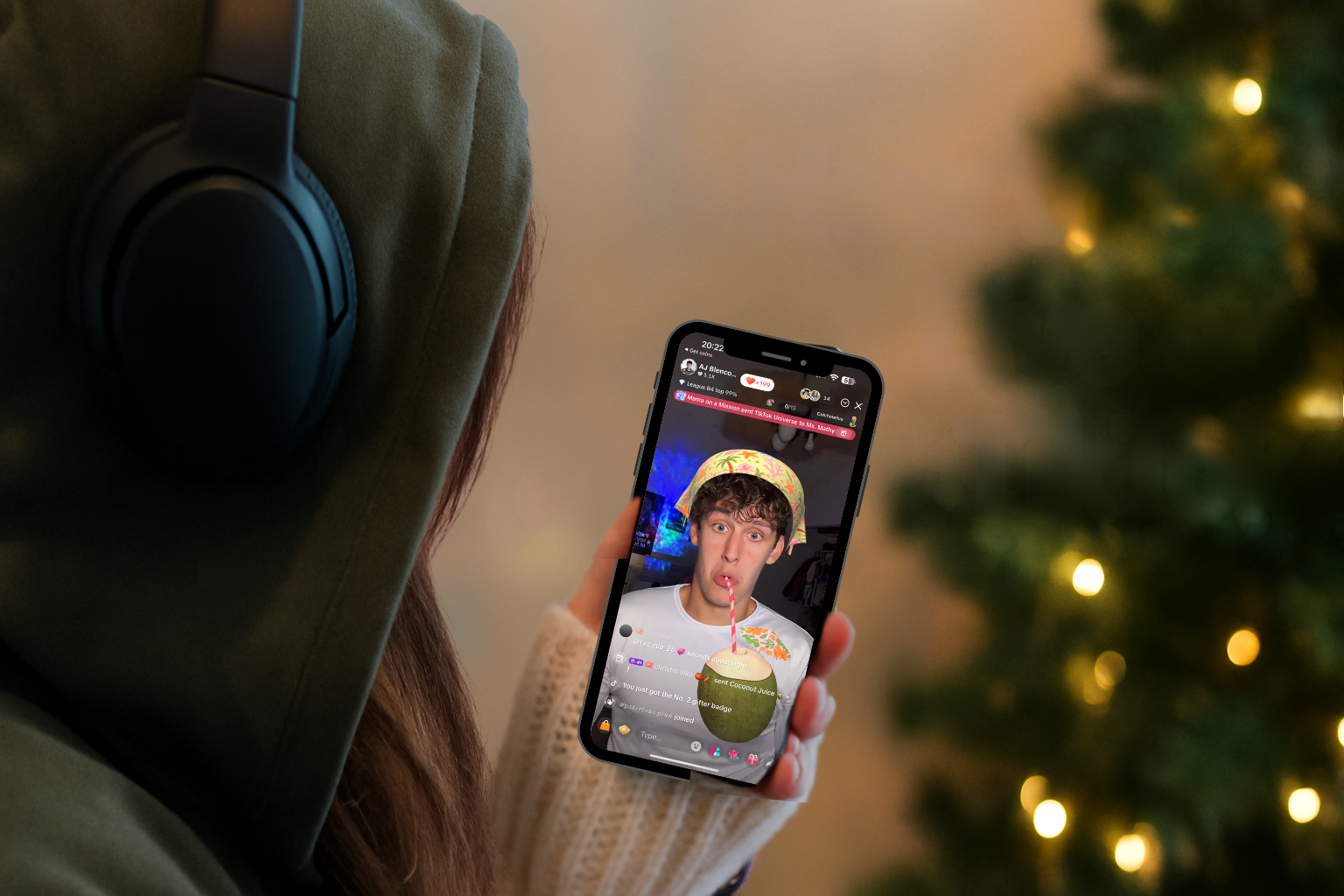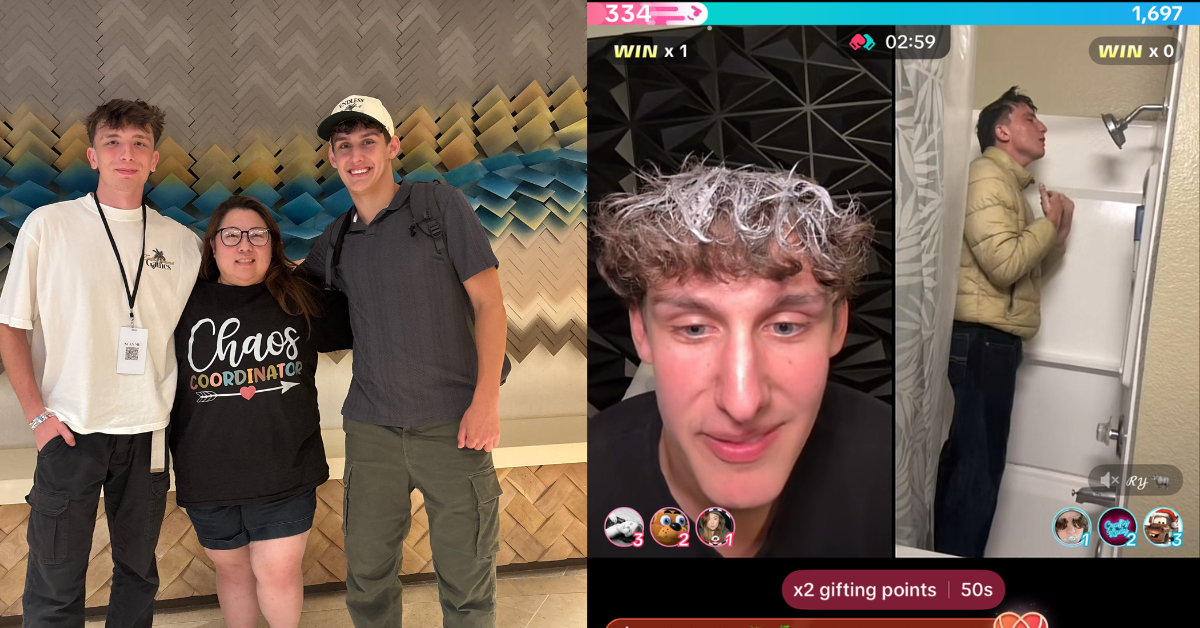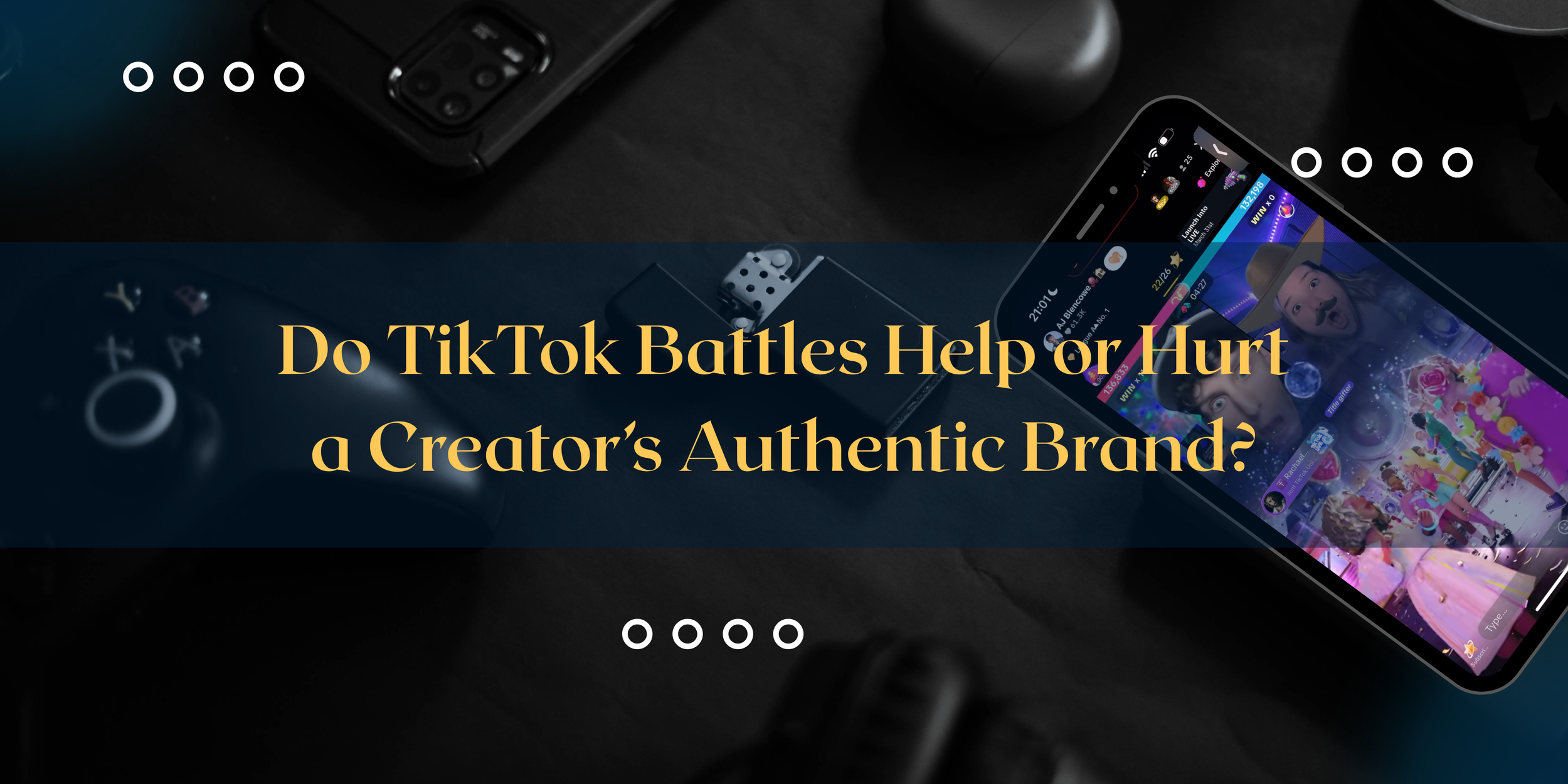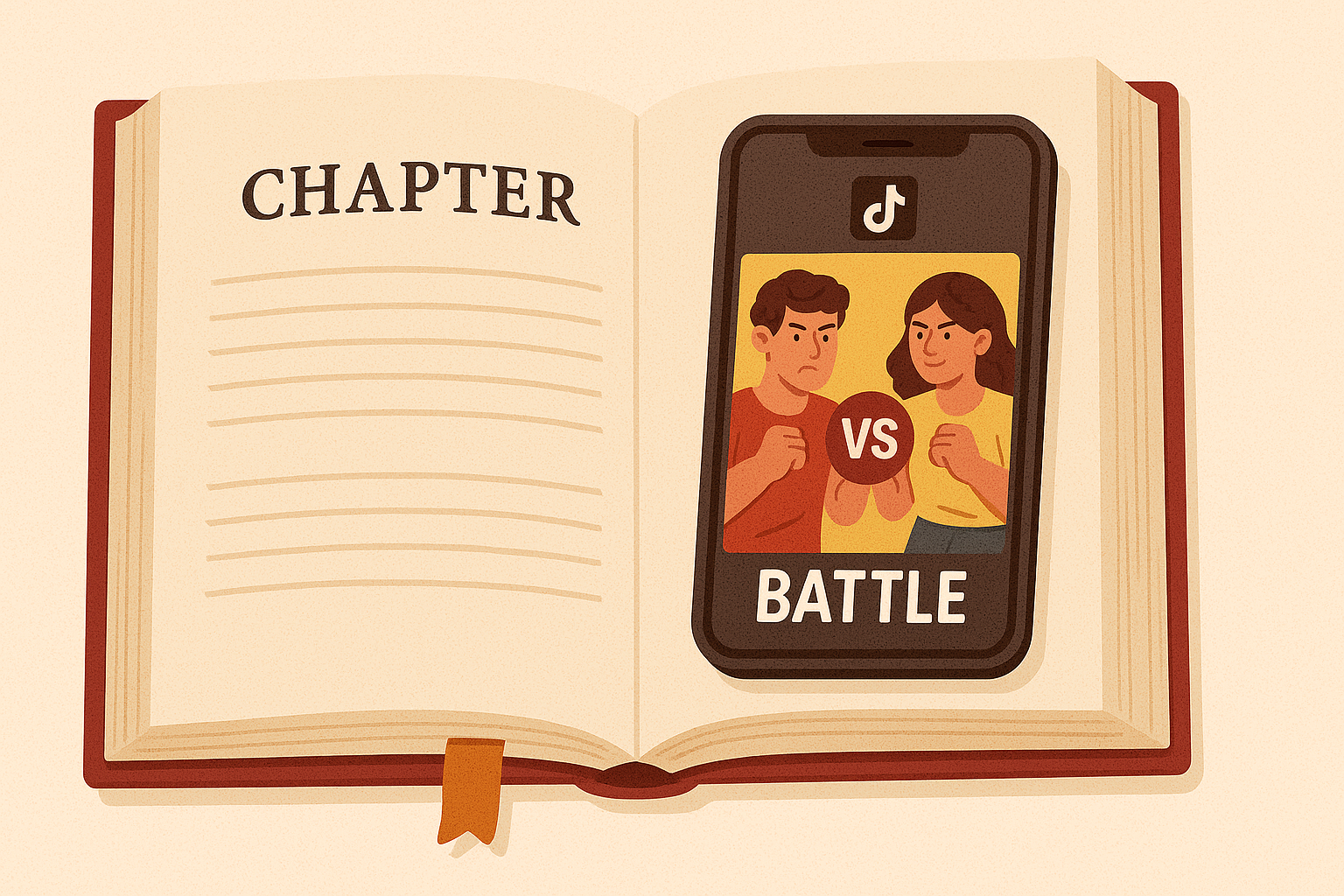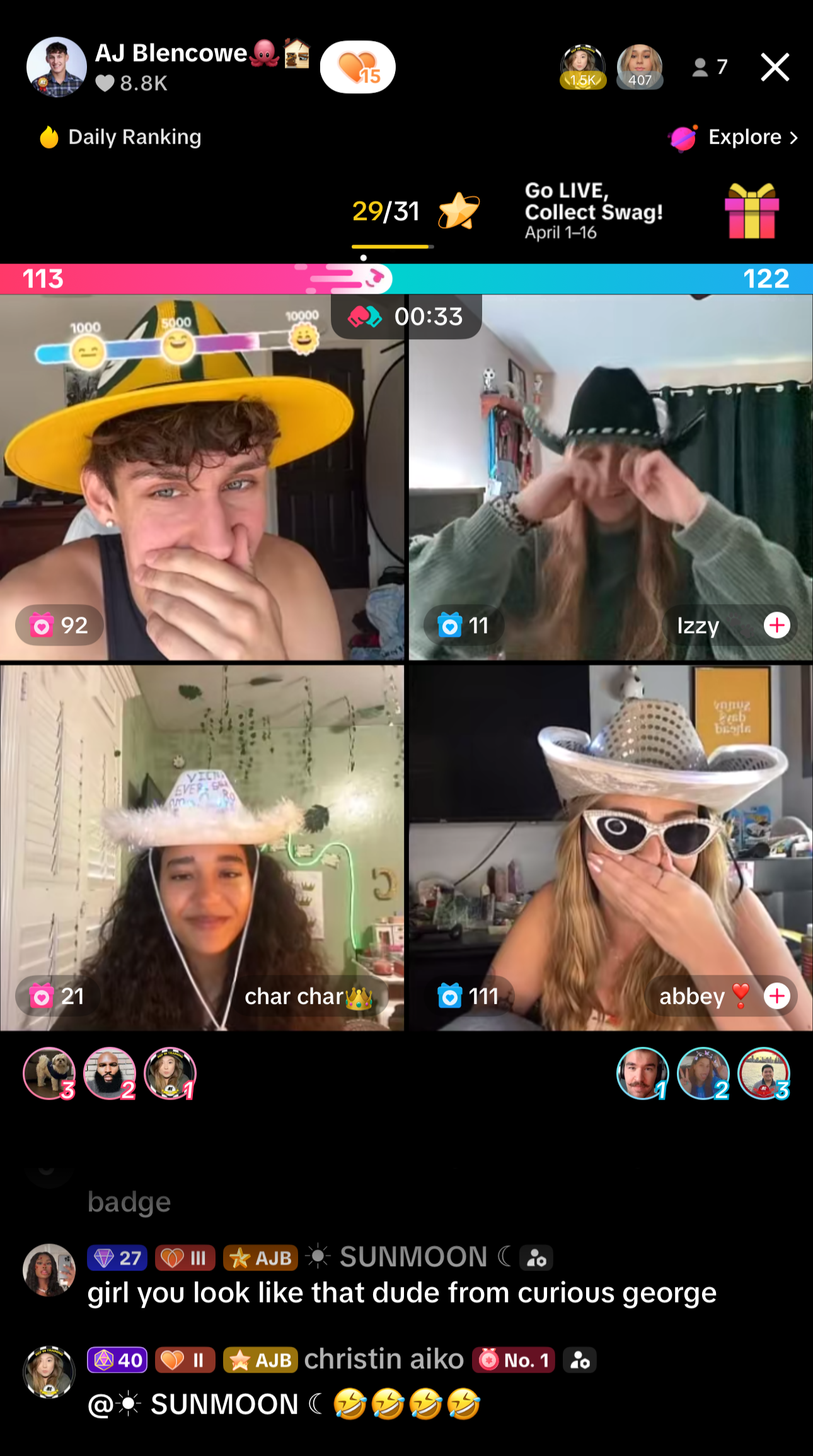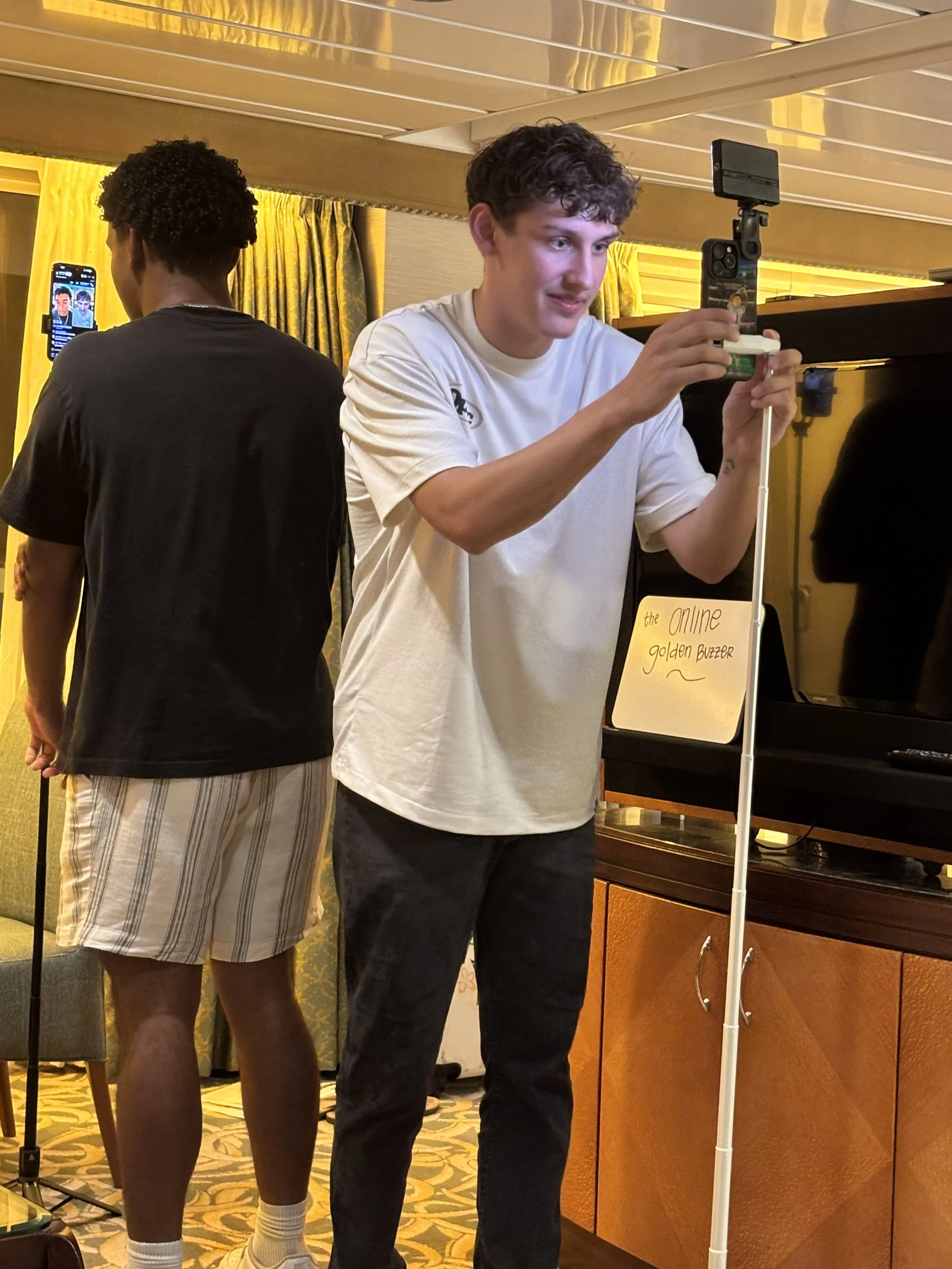When the Plan Falls Apart: Finding My Way Back to What I Love
When everything I built fell apart, I thought I had failed. But God was never finished with my story. He was just rewriting it His way.
The Beginning
I majored in Communication because I have always been drawn to people and the stories we share. I wanted to understand how connection works, how words can inspire, comfort, or shift perspective. Writing has always been my way of processing the world. I started writing poetry in grade school, and one of my poems was published in a book when I was in high school.
Even back then, I knew words were my home.
In college, I imagined a career where creativity and communication would meet. During my internship in music marketing, I saw that possibility come to life. I witnessed how strategy, storytelling, and emotion could work together to move people. It was exciting and meaningful, and I thought I had found my direction.
But after graduation, the job market was terrible. Every no and unanswered email started to weigh on me. I prayed for something that would open a door, even a small one. Eventually, I stopped being picky. I needed stability, so I took the first job that came my way.
That is how I ended up at a call center.
There were days I wondered if this was really where my degree had led me.
The Call Center Days
My first full-time job was spent answering phones for contractors, plumbers, and homeowners. Most of them were frustrated or upset, and I became the person they took it out on. I learned to stay calm while being yelled at and to sound professional even when my patience was gone.
There were days when I would hang up the phone, take a deep breath, and whisper, “God, please help me get through this day.”
It was not glamorous, and it definitely was not fulfilling. I would come home mentally exhausted and question what I was doing with my life. I felt like I had worked so hard for a degree that led nowhere.
So when another job offer came along, I accepted it without hesitation. I did not stop to think about whether it aligned with what I wanted. I just knew it was not the call center. Looking back, I believe God used that moment to redirect me, even if it did not feel like it at the time. That decision opened the door to a new chapter that would last more than a decade.
For over ten years, this became my world.
A Decade in Legal
My new job was in the legal field. When I started, I told myself it was temporary, a stepping stone until I could get back to something creative. But one year turned into three, and three turned into more than ten.
Legal work taught me a lot. I learned discipline, attention to detail, and how to communicate clearly and professionally. I learned how to handle pressure, navigate conflict, and show up even when I was tired.
But over the years, I started to lose a sense of who I was. The work paid the bills, but it slowly drained the joy out of me. The pace, the pressure, and the constant seriousness of it all left little room for creativity. I missed the version of myself who dreamed big and loved writing.
For a short time, I stepped away from legal and took a detour into data analytics. I wanted to try something new that still used my analytical side but felt different. I enjoyed finding meaning in numbers, but that season was short. Before long, I was back in legal.
At that point, I told myself to be grateful and stay practical. But deep down, I knew I had settled into comfort, not calling.
When Everything Changed
Then, a month ago, everything stopped.
I lost my job after more than ten years in the field. It was sudden and painful. After spending so long being the dependable one, it felt strange to be without structure or a title. The silence after the busyness was unsettling.
At first, I panicked. Then I cried. Then, in the quiet, I began to pray.
I asked God what He wanted me to do next. And the truth that came to mind was not loud. It was gentle. I remembered the person I used to be before the burnout, before the titles, before the fear of starting over. The girl who loved words, who believed in storytelling, who found beauty in creativity.
That part of me had been buried, but it was not gone. God was simply bringing it back to life.
In the quiet, I began to pray again and remember who I was.
The Hard Part of Starting Over
Now, I am working toward a new path in digital marketing. It feels like a full-circle moment. It is the field that brings together everything I love: communication, writing, creativity, and connection.
But starting over is hard.
I am not a recent graduate. I do not have a long list of marketing credentials. I scroll through job listings and see requirements I do not meet. And when I apply anyway, I am often met with silence.
It is easy to feel unseen and overlooked. There are days I question my worth. Days when I wonder if maybe I missed my moment.
But when those thoughts come, I remind myself that God is not limited by time, age, or job titles. He does not care how long it has been or how far I have wandered. He can restore what feels lost and breathe life into what feels finished.
I do not have to have it all figured out. I just have to keep walking in faith.
What Faith Reminds Me
My faith has taught me that God wastes nothing. Romans 8:28 says, “And we know that for those who love God all things work together for good, for those who are called according to his purpose.”
I have carried that verse in my heart for years, but it feels especially true now.
All things, even the detours, the dead ends, and the jobs that drained me, have shaped me.
My years in legal were not a mistake. They gave me endurance, discipline, and patience. They taught me how to handle pressure, how to communicate with clarity, and how to keep going when things got hard. Those lessons were preparation, not punishment.
Now, when I look back, I see God’s hand in every season, even the ones that felt like failure.
Finding My Way Back to Joy
Being unemployed has been humbling, but it has also been revealing. For the first time in a long time, the noise is gone, and I can hear God more clearly. I am beginning to rediscover the part of myself that was created for connection, creativity, and storytelling.
I write again. I learn. I pray. I take small steps forward, even when I do not feel confident.
Each word feels like a small act of faith, one step forward at a time.
Digital marketing feels like the right direction, not because it is easy, but because it combines everything I love: words, meaning, communication, and human connection. It allows me to create, to build, and to reach people in ways that matter.
There are still hard days. There are still tears and moments of doubt. But I have learned that faith is not about knowing what happens next. It is about trusting the One who does.
God has carried me through every season before this one. He will carry me through this, too.
Maybe the plan did not fall apart after all.
Maybe God is just rebuilding it His way.
“The Lord will fight for you, and you have only to be silent.” — Exodus 14:14
To Anyone Who Feels Stuck
If you are in a season of waiting, loss, or starting over, I want you to know you are not alone. It can be hard to see God’s hand in the middle of confusion and uncertainty, but He is there. Even in silence, He is working. Even in the unknown, He is preparing you.
The path you thought was permanent might have just been a chapter. The dream you buried might still be alive.
Keep going. Keep praying. Keep trusting that God’s plan is bigger and better than anything you could build on your own. He is not finished with your story. And neither are you.
Maybe the plan didn’t fall apart. Maybe God is rebuilding it His way.
From Livestreams to Leading Roles: What Disney Can Learn from Creator Authenticity
The next generation of actors may already be performing live from their bedrooms. In a world where livestreams have become the new stage, creators like AJ Blencowe are redefining what it means to act with authenticity. Disney’s future stars might not be discovered through casting calls but through connection, the kind built one conversation, one livestream, and one real moment at a time.
The Unsung Stage of Livestreaming
Before stepping under studio lights or learning to hit marks on set, many of today’s most captivating performers have already spent thousands of hours performing, not in Hollywood, but in their bedrooms, in front of an audience that talks back in real time.
Livestreaming is the digital generation’s stage play: raw, unpredictable, and unedited. There are no second takes, no production crews, and no retakes to fix awkward moments. Every silence lingers, every laugh lands or does not, and every shift in emotion is felt immediately.
Connection happens one message at a time.
It is part improv, part emotional tightrope. Unlike a film set, where lighting and editing can mask mistakes, livestreaming depends entirely on presence. The creator’s energy becomes the entire production value. They must hold attention, adapt to emotion, and remain human enough for viewers to feel they are spending time with a friend, not a performer.
It may not be perfect, but it is alive.
Creators who thrive in this space keep their communities engaged day after day, sometimes for years. Their livestreams become a serialized show that never ends, like a cross between a reality series, a talk show, and a therapy session. The difference is that every moment is genuine.
That quality, the ability to make people feel seen and not just entertained, is something Disney has always chased in its stories. The best actors do not simply act; they become. Livestreaming, in its own way, demands the same.
So what happens when creators who have mastered authenticity online step into scripted worlds built on imagination, like Disney’s?
The Real-Time Acting Classroom
Livestreaming is unpredictable. You never know who will show up, what the energy will be, or how long you will have to keep the audience’s attention. The creator’s greatest skill is not technical mastery but emotional agility, the ability to shift tone, language, and pace at any given moment.
Take AJ Blencowe, for example. His TikTok Lives are controlled chaos in the best way. One moment, he is laughing with his regulars about an inside joke. Next, a new viewer joins to share something deeply personal, and instantly the atmosphere shifts. AJ softens his tone, listens, and offers empathy. Minutes later, the chat fills with messages from viewers across the world, writing in multiple languages and introducing themselves from different time zones. AJ switches gears again, bringing up the energy to match the excitement.
Authenticity is the new rehearsal.
Livestreaming is not amateur performance. It is emotional training for authenticity under pressure.
What he is doing, without realizing it, is acting in real time. He is reading the room, embodying empathy, and maintaining narrative flow, the same muscle actors use on set. Where actors have directors to cue them, livestreamers must direct themselves while performing.
Disney’s next generation of talent may already be rehearsing, not in front of casting agents, but in front of ring lights and comment sections.
Faith, Grounding, and the Modern Performer
In the creator world, success can be disorienting. One viral moment can change your life overnight. The attention, brand deals, and fan messages can make creators feel invincible until they do not. Without grounding, the same platforms that build them up can also hollow them out.
Many creators start performing for their audience instead of with them. The performance becomes reactive, driven by algorithms rather than authenticity. Over time, the content loses its spark. Audiences notice when something feels forced or hollow, and once trust is broken, it is difficult to rebuild.
Grounding is what separates the performers who burn out from the ones who endure. Whether it comes from faith, family, or a clear sense of purpose, creators who know who they are can handle the chaos without losing their center.
Stillness is where the story begins again.
AJ Blencowe is one of those creators. His faith does not define his content, but it informs it. Between the jokes, music, and conversations, his livestreams often carry undertones of hope and humility. He approaches his platform as both a creative space and a calling, and that perspective shapes how his audience connects with him. (Read more about his community here.)
When creators stay grounded, their work resonates on a deeper level. Their audiences feel it too, that quiet confidence that says, “I’m here because this means something.”
The strongest performers are not just talented; they are anchored.
That has always been part of Disney’s magic as well. Beneath the spectacle and animation, the company’s best stories remind us who we are and what we believe in.
Audience Connection as a Superpower
The creator-to-audience relationship is unlike anything traditional Hollywood has seen. In film and television, audiences fall in love with characters. In livestreaming, they fall in love with people.
This emotional intimacy builds what psychologists call parasocial trust, the illusion of friendship that feels completely real. In a livestream chat, that illusion gets reinforced every few seconds. The creator responds directly to comments, remembers usernames, celebrates birthdays, and comforts viewers during bad days.
Traditional actors rarely get that kind of real-time feedback. Take someone like Jensen Ackles, who built a deeply loyal fanbase over fifteen seasons of Supernatural. That level of connection took years to build, through consistent character work and fan conventions. Yet creators like AJ build that same kind of trust in a fraction of the time because their audiences see the unfiltered version of them.
Audiences no longer just watch stories. They follow storytellers.
AJ’s viewers have followed his journey from TikTok Live battles to acting auditions. When he is off livestream because he is filming, fans eagerly await his return and ask how set life is going. They root for him as if they are part of his story because, in a way, they are.
Audiences no longer just watch stories. They follow storytellers.
For Disney, this kind of built-in community is invaluable. When a creator steps into an acting role, they bring more than followers. They bring trust, empathy, and connection, qualities that cannot be manufactured through marketing alone.
Blurring the Line Between Creator and Character
We are entering a new era of storytelling, one where the boundaries between online personality and onscreen performance are beginning to dissolve.
Disney has always built immersive universes, from Marvel to Star Wars to its animated classics. But imagine actors who arrive at those universes already carrying one of their own: communities, inside jokes, shared values, and a distinct emotional tone that shapes how audiences experience them.
In this evolving landscape, casting will no longer be just about talent or looks. It will be about resonance. Finding actors whose real-life presence aligns with the emotional DNA of the roles they play.
When creators step into acting, they bring lived experience, emotional dexterity, and a rare kind of vulnerability that can transform fictional worlds into something personal. They understand what it means to perform for an audience and with an audience at the same time.
The future of acting begins where digital storytelling meets imagination.
The next leading man or woman will not be discovered. They might already live.
The Next Disney Star
Livestreamers have proven that authenticity is performance, just unscripted. As creators transition into acting, they bring something Hollywood has tried to replicate for decades: real connection.
They are part actor, part empath, part storyteller, and part community builder. They have learned how to hold attention in a room of thousands while staying grounded enough to remember why they started.
The next Disney star will not just know how to act. They will know how to listen.
Maybe the next great fairytale begins not with “Once upon a time,” but with:
“Hey chat, can you hear me?”
The most powerful performances start with listening.
Hot, Hard, and Hashtagged: The Marketing of Men
Modern media markets men as brands: hot, hard, and hashtagged. Between curated strength and digital performance, faith offers a counter-message that your worth isn’t built by visibility or muscle, but by the heart God sees. A cultural and biblical look at masculinity today.
The New Masculine Commodity
If you scroll through Instagram, sit through a sports commercial, or glance at a movie poster, you’ll see it everywhere. Men, packaged and presented like products. Muscles, money, and machismo are no longer just traits; they’re advertising assets. We’ve entered an era where masculinity isn’t simply lived, it’s branded.
You probably recognize the TikTok sound by @girl_on_couch (Megan Boni): “I’m looking for a man in finance, with a trust fund, six-five, blue eyes.” What started as humor became cultural commentary, a mirror to how society ranks desirability by income and image.
Or maybe you recall those iconic Calvin Klein ads from the ’90s, black and white, minimal, and hypersexualized. You know the one: a ripped man in his underwear staring straight into the camera. (Pssst… I once went on a date with a Calvin Klein model, and let me tell you, “ripped” doesn’t even begin to cover it.)
Print once shaped desire through pages, not pixels. Masculinity became a product long before it went viral.
Both examples reveal the same truth: media has created a bias for what men should look like, not just physically, but socioeconomically.
We’ve long discussed the objectification of women in media, but now we must face the intense pressure targeting men.
The modern male identity is increasingly defined by a hyper-specific, commercially driven trifecta: physical perfection (“Hot”), relentless achievement and stoicism (“Hard”), and constant digital self-promotion (“Hashtagged”). This new paradigm impacts male self-worth, relationships, and even faith.
The “Hot” Imperative (The Aesthetic Pressure)
“Sex sells” has been the advertising mantra for decades, but now, strength sells too. Think of Dior Sauvage commercials with Johnny Depp smoldering under desert skies, or Old Spice’s absurdly muscular “Man Your Man Could Smell Like” campaign. The male body has become shorthand for dominance and desirability, not dignity.
Marketing no longer sells utility; it sells transformation. Once, a razor was just a razor; it shaved your face. Now it promises confidence, success, and attraction.
Then, razors, deodorants, and aftershaves were about hygiene and practicality. Now, supplements, skincare, and style are about becoming stronger, sexier, and more successful.
Men aren’t just buying products anymore; they’re buying stories about who they could be. A protein shake isn’t just fuel; it’s “discipline in a bottle.” A gym membership isn’t just about health; it’s “hustle made visible.” The danger is that marketing doesn’t just sell a product; it sells the problem of not being enough.
This idea is everywhere in pop culture. Superhero franchises like Marvel’s Avengers and DC’s Justice League parade men with godlike physiques, teaching audiences that physical perfection equals moral authority. Movie posters, music videos, and even sports broadcasts project the same gospel of abs and aggression.
But this obsession doesn’t stay on screen. It follows men onto their phones. Scrolling through social media has become a quiet self-audit. You see Cristiano Ronaldo or Maluma in perfect lighting and start to wonder: Is my jawline sharp enough? Should I smile, or does that look less masculine? The simple act of scrolling becomes comparison. You become the art critic of your own reflection.
Late-night scrolls, chasing connection through the glow of a screen.
Scripture offers a counter-message. When Samuel was sent to anoint Israel’s next king, God told him, “The Lord sees not as man sees: man looks on the outward appearance, but the Lord looks on the heart” (1 Samuel 16:7, ESV). Strength in God’s eyes is never about biceps or beauty; it’s about integrity and inner life.
The Sculpted Standard has quietly become the male equivalent of the “Barbie body”. It’s airbrushed, curated, and often impossible without trainers, lighting, and editing. Fitness influencers on TikTok and Instagram push the illusion that perfection is earned, but never mention steroids, Photoshop, or self-doubt.
Men today are pressured to become both product and producer. They trade “strong and capable” for “lean and shredded,” forgetting that God created the body to serve, not to sell. As Paul wrote, “Do you not know that your body is a temple of the Holy Spirit within you... You are not your own” (1 Corinthians 6:19-20, ESV).
The “Hard” Imperative (The Performance of Masculinity)
The classic marketing playbook sells women as objects of beauty and men as objects of power. Enter machismo.
Aggression sells. Men fighting, winning, dominating. Domination becomes desire. From the roaring engines of truck commercials to the sweat-drenched faces of Rocky and Creed, the message is clear: real men conquer.
The Ford F-150 slogan “Built Ford Tough” doesn’t just sell a vehicle; it sells validation. Around 70–88% of pickup truck owners are male, and buying one often signals not transportation, but toughness. It’s masculinity on wheels, a reminder that “real men” are durable, not delicate.
Strength sold as identity. A Ford truck against a rugged backdrop symbolizes how advertising ties masculinity to endurance and control.
Even the beard has become a brand. Once a natural feature, it’s now a symbol of grit, rebellion, and traditional strength. Beard-oil ads don’t promise cleanliness; they promise confidence. The beard is no longer about grooming but identity, the modern armor of manhood.
Refined. Real. Reflective.
Elevate your everyday ritual with timeless style and intention.
But this kind of “hardness” isn’t just in ads. It’s in self-help books that preach dominance, podcasts that label compassion as weakness, and influencer coaches who turn hustle into holiness. Hustle culture has become religion. Men are told to wake up at 4 a.m., outwork everyone, and never rest.
Faith once tied provision to love and care, but marketing ties it to salary, silence, and status. Burnout becomes a badge of honor. Overwork becomes “grit.” Struggle becomes “character development.”
Ads sell watches, laptops, and leadership courses with one message: Real men don’t rest.
But Scripture directly confronts this lie. Jesus said, “Come to me, all who labor and are heavy laden, and I will give you rest” (Matthew 11:28, ESV). God never designed manhood to be a brand or a burden. True strength is shown in surrender.
“Man up” doesn’t just echo in locker rooms; it’s a consumer directive. It sells deodorants, trucks, colognes, and silence. The emotional cost is a generation fluent in strength but illiterate in softness.
Samson, the strongest man in Scripture, fell not because of weakness in his body but because of blindness in his spirit. David, meanwhile, showed a different kind of power, one that could cry, repent, and lead with humility. In God’s kingdom, brokenness is not failure; it’s formation.
Even the self-help industry has capitalized on masculine insecurity. It sells dominance, discipline, and “alpha energy,” but often leaves men alienated and anxious.
The “Hard” imperative sells control, but Scripture says, “The Lord is my strength and my shield; in him my heart trusts”(Psalm 28:7, ESV). Masculinity built on performance collapses under pressure. Masculinity rooted in Christ endures.
The “Hashtagged” Imperative (The Digital Showcase)
Welcome to the age of algorithmic masculinity, where being “man enough” means being seen enough.
Reflections of modern masculinity are curated, composed, and caught in grayscale.
Minimal light. Maximum story
On social media, the male body is curated, optimized, and rewarded. Platforms like Instagram and TikTok act as invisible editors, boosting what performs best: confidence, control, and perfect lighting for abs.
Influencer culture has turned everyday men into marketers. NFL stars film “grindset” montages, lifestyle creators post luxury watch collections, and Christian influencers wrestle with the balance between “authenticity” and aesthetics. Even vulnerability is branded: a photo of tears becomes content, a confession becomes engagement.
The algorithm favors visibility over vulnerability. TikTok has been documented to suppress users deemed “unattractive” while promoting conventionally beautiful ones (NPR). Internal reports revealed that videos flagged as “ugly, poor, or disabled” were suppressed in the For You feed.
Every post becomes a product pitch for the self. Every man becomes both marketer and merchandise.
In the glow of the lens is where creation begins.
A quiet moment of setup before the story starts
It’s not enough to be ambitious; you must look ambitious. Gym check-ins mean discipline. Office selfies mean drive. Travel photos mean freedom. Hashtags become digital credentials (#grindset, #motivation, #success).
But Jesus warned, “Beware of practicing your righteousness before other people in order to be seen by them” (Matthew 6:1, ESV). The media says visibility equals value. The Gospel says secrecy can be sacred.
When life becomes content, worth becomes quantifiable. Likes become liturgy. The brand becomes the altar. And men who stop posting fear invisibility more than inadequacy. Behind every thirst trap and hustle reel is the same hunger, not for fame, but for legitimacy.
The “Hashtagged” imperative turns life into a loop of performance and validation. In chasing visibility, men risk losing something sacred: the unposted self. Romans 12:2 (ESV) reminds us, “Do not be conformed to this world, but be transformed by the renewal of your mind.” Faith invites men to log off the performance and return to presence.
Faith Perspectives: More Than Muscles
Where marketing sells strength, faith reframes it.
Slow mornings. Honest thoughts. Gentle grace.
Worth is inherent: Men are valuable not for dominance or appearance, but because they are made in the image of God (Genesis 1:27, ESV).
Servanthood over status: Jesus modeled humility, not self-promotion (Philippians 2:3–4, ESV).
Redefining strength: True strength is found not in flexing muscles, but in showing restraint, compassion, and love (Proverbs 16:32, ESV).
Faith doesn’t reject strength or ambition; it redeems them. Muscles may inspire, but integrity transforms.
Beyond the Brand: The Truth About Strength
We live in a world where men are told to be “Hot, Hard, and Hashtagged.” But Scripture whispers a different story: that being seen isn’t the same as being known, and being strong isn’t the same as being whole.
The media says to perfect your image. God says to renew your mind.
When men trade reflection for projection, hustle for healing, and image for intimacy, they risk losing the very thing that makes them human: their heart.
Because at the end of the day, the truest form of manhood isn’t branded; it’s born again.
Quiet mornings. Open pages. A moment to reflect before the world begins.
Faithful Marketing in a World Obsessed with Influence
Let’s be real, chasing influence without faithfulness leaves you restless and hollow. You can have 6 million likes and still feel unseen. Metrics are mist. They are vapor. They are vanity. What lasts isn’t clout, but character.
Influence.
It’s the word that dominates our feeds, our conversations, and even our dreams. Whether you are a creator, a brand, or an entrepreneur, the pressure to “make it” almost always comes down to numbers: how many followers, how many likes, how much engagement, how viral did you go?
The digital age has turned influence into an idol. It promises validation, power, and worth. But once you achieve it, if you ever do, you realize the promise was empty. Influence without faithfulness leaves you restless and hollow.
Let’s be real, we were never designed to worship influence. We were created to steward it. That is where faithful marketing begins, in recognizing that our platforms, audiences, and campaigns are not thrones for self-glory, but trusts entrusted to us by God.
This is not just another marketing strategy. It is a countercultural blueprint for creators and brands who want to honor God in a world obsessed with influence.
The Idolatry of Influence
The Bible speaks often about idolatry, about the temptation to worship created things instead of the Creator. In today’s culture, one of the loudest idols is influence.
Vanity Metrics as False Gods
Likes, diamonds, shares, and engagement rates promise meaning. They resemble a crown of achievement, yet they leave us feeling empty.
You can have 6 million likes on a post and still feel unseen when you close your phone at night. You can hit the top 10 on the leaderboard and still wonder if your work matters. Metrics fluctuate daily, viral one week and irrelevant the next. They are mist, vapor, vanity.
Scripture warns us:
“Vanity of vanities, says the Preacher, vanity of vanities! All is vanity.” (Ecclesiastes 1:2)
The deeper danger of vanity metrics is not just disappointment. It is misplaced identity. If we tie our worth to numbers, we will always be on a treadmill, running harder but never arriving.
The Cult of Personality
Another idol is personality. In marketing, charisma is often prized above all. Charisma gets you noticed. The magnetic voice, the bold presence, the clever one-liners. It creates buzz and sparks engagement.
But charisma without character is hollow.
We have seen it over and over again. A brand spokesperson or influencer skyrockets to fame, only to crash when their private life or unethical practices come to light. Charisma may fill a room quickly, but it cannot sustain long-term trust.
Real influence comes from integrity, honesty, courage, and consistency. Character builds trust that lasts far beyond a viral moment. Without it, your following is only as strong as your last viral spike.
Faithful marketing recognizes this truth. Charisma may attract, but character sustains.
Biblical Principles for Faithful Marketing
Faithful marketing is not only about rejecting idolatry. It is about embracing biblical principles that guide how we use influence.
Stewardship, Not Self-Glory
In my years working in the legal field with Trusts and Estates, I learned how fiduciary responsibility works. A trustee does not own the assets they manage. They are legally bound to use those resources in the best interest of the beneficiaries. If they mismanage funds or exploit them for personal gain, the law holds them accountable.
Now think about your platform. Your followers. Your audience. Your influence.
You do not own them. They are entrusted to you. You are a trustee of the influence you have been given. And just like a trustee, you are accountable, not only to your audience but ultimately to God.
This means your content, campaigns, and marketing efforts must prioritize service over self-glory. Faithful marketing does not see an audience as a fanbase to exploit but as a community to serve.
Truth Over Tactics
Deception is one of the most common shortcuts in modern marketing. We see it everywhere:
Spliced TikTok ads where scammers use a doctor’s video to “endorse” a product they have never heard of
Fake weight-loss transformations stolen from other accounts
Overhyped promises that never deliver
All of it is built on lies. And all of it destroys trust.
Faithful marketing chooses truth, even when it costs. Transparency might slow growth in the short term, but it builds trust that endures. As Proverbs 12:22 says:
“Lying lips are an abomination to the Lord, but those who act faithfully are his delight.”
Truth outlasts tactics. Integrity outlasts manipulation.
Service Before Strategy
Strategy matters, but service matters more.
Too often, brands ask, “What can we do to grow?” when they should be asking, “Whose needs can we meet? Whose burdens can we help carry?”
This is the posture of Christ, who said He came not to be served but to serve (Mark 10:45). Marketing modeled after Jesus is not primarily about algorithms, aesthetics, or analytics. It is about service.
When you focus on service, your strategy becomes more effective because people feel seen, valued, and cared for.
Obedience Over Outcomes
Metrics matter, but they do not get the final word.
Faithful marketing does not ignore data; it just refuses to worship it. The ultimate question is not “Did I get the results I wanted?” but “Was I faithful with what God asked of me?”
Obedience does not always look successful in the world’s eyes. Sometimes you will post content that serves deeply but does not perform well on the surface. That is okay. God sees faithfulness in the unseen places.
A Countercultural Blueprint
If we want to escape the idolatry of influence, we need a new blueprint. One that is rooted not in trends but in timeless truth.
Redefine Success: Stop chasing scale and start pursuing substance. Depth will always outlast reach. Faithfulness will always outweigh fame.
Reject the Algorithm’s Worship: Algorithms can be useful tools, but they make terrible gods. Use them, but do not bow to them. Let your values, not the algorithm, determine your content.
Resist the Spectacle: Joy, art, and creativity are beautiful, but they should never replace truth. Entertainment should enhance meaning, not overshadow it.
Root Strategy in Scripture: Scripture offers timeless marketing principles. Honesty, patience, clarity, consistency. These will outlast every trend cycle.
This blueprint is countercultural. It will not guarantee instant virality. But it will give you something more valuable: lasting trust and eternal impact.
What Faithful Marketing Looks Like in Practice
Faithful marketing is not just theory. It changes the way you create, campaign, and connect.
For Creators
Build community, not clout
Prioritize long-term trust over short-term spikes
Show integrity when no one is watching
For Brands
Align campaigns with convictions
Refuse manipulative tactics
Elevate service and honesty as your brand’s true differentiators
Imagine if brands and creators alike committed to this. Marketing would not just be about products or platforms. It would be about people, service, and faithfulness.
The Call to Faithfulness
In the end, it comes down to this: influence fades, but faithfulness endures.
The followers you gain today might unfollow tomorrow. The algorithm that boosts you this month may bury you next month. The hype of virality is fleeting.
But faithfulness lasts.
Paul’s words to the Corinthians echo through every marketing campaign and every post we publish:
“It is required of stewards that they be found faithful.”
(1 Corinthians 4:2)
That is the call. Not to chase influence at any cost, but to steward it with humility, integrity, and service.
Because in a world obsessed with influence, what will set us apart is not how many people we reach, but how faithfully we serve the ones we have been given.
Finding Community on TikTok Live: The Power of Belonging Online
We often dismiss online spaces as “less real.” But my experience on TikTok Live proved otherwise. Belonging is built through presence, not polish — through small, consistent acts of care that remind us we’re not just usernames on a screen.
Protecting My Peace
I’ve always been a relatively private person. Not just the kind who avoids oversharing on social media, but the kind who thinks carefully about what parts of myself I offer to people at all. I’ve always felt that once you give a piece of yourself away, whether it’s a story, a struggle, or even just your unfiltered opinion, you can’t take it back. People can hold onto it, interpret it differently than you meant, or even use it against you. So, I learned to keep most things close to my chest.
In most digital spaces, people don’t even know my last name. I’ve built entire friendships where we recognize each other by profile pictures and emojis instead of personal details. And honestly, I liked it that way. It gave me control, a way to exist online without feeling exposed.
In person, the circle of people I truly confide in is even smaller. I’ve always believed in quality over quantity when it comes to trust. My peace is hard-earned, and protecting it isn’t just a preference. It feels like survival.
Still, there’s a loneliness that creeps in when your world is so tightly guarded. You can be surrounded by acquaintances and still feel unknown. You can scroll through endless content and still feel unseen. For me, joining online spaces was never about chasing attention. It was about chasing connection, even if I didn’t fully realize it at the time.
Over the years, I’ve joined and left multiple TikTok Live communities. Sometimes the vibe was off. Sometimes, the people felt shallow or cliquey. Sometimes I just didn’t have the energy to invest. So, I’d leave, closing the door behind me quietly, carrying my peace with me like a shield.
Then in March, something unexpected happened. I was asked to step into a new role: serving as a referee for Recapture Livestream.
At the time, I was struggling physically, emotionally, and spiritually. My body felt worn out, my mind felt scattered, and my spirit felt dim. Saying yes didn’t make sense logically, but something in me agreed before my brain could argue. Maybe it was curiosity. Maybe it was hope. Or maybe it was just the quiet belief that sometimes saying yes to something small can open a door to something bigger.
The Role & Meeting AJ
The role was simple on paper: connect creators, watch the tournament battles, and record the wins. A clipboard job, really, except there was no clipboard, just my phone and a sense of responsibility to keep things fair. On the surface, it didn’t sound like much.
I was assigned to matches at random, often between creators I didn’t follow and sometimes had never even heard of. That meant every night was unpredictable. One minute, I’d be watching two seasoned streamers banter like best friends. Next, I’d be in the middle of an awkward matchup where the silence was so heavy it felt like I was trespassing.
On my second night, one of those creators was AJ Blencowe.
I remember the moment clearly, not because I thought it would matter, but because of how ordinary it seemed. His livestream popped up on my screen like dozens of others had before. A plain background. A face I didn’t recognize. A username I didn’t know. My first thought was almost dismissive: “Who is this kid? Never heard of him.”
There was nothing polished about his setup. His bed was in the background. The lighting was much like every other streamer’s…you know, those LED galaxy lights that everyone seems to buy off Amazon.
But then, something shifted. As the battle went on, I noticed the way his chat lit up, not just with emojis and random comments, but with genuine interaction. People weren’t just watching him. They were talking to him, with him, around him. It wasn’t a one-sided performance where the creator broadcasted and the viewers silently consumed. It was a conversation, messy and alive.
AJ didn’t act like someone trying to impress. He laughed at his own awkward jokes, rolled with the trolls, and didn’t hide when he stumbled. There was a humility there, paired with a humor that disarmed the usual tension of competition.
I didn’t know it yet, but that was the night something clicked. Not in a thunderbolt, life-changing moment kind of way. More like a spark that lingers, small enough to ignore, but steady enough to draw you back.
Something stuck. I came back again and again until his chat quietly became my community. And as much as I troll AJ, I mean it when I say he’s become like a little brother to me.
Sometimes the people you least expect end up becoming the ones you hold closest.
Which leaves me with the question I never thought I’d ask: Can you really belong in a place where people only know you through a screen?
The Myth of Real vs. Online Connection
There’s still this idea floating around that online friendships aren’t real friendships. It’s not always said outright, but it shows up in the way people roll their eyes when you mention someone you “met online,” or how older generations dismiss digital spaces as shallow, superficial, or even dangerous.
Many argue that online spaces are nothing but curated personas, filters, and highlight reels. And to be fair, the internet is full of those things. But what often gets overlooked is the other side: the messy, unpolished, unfiltered interactions that don’t make it into Instagram feeds or perfectly edited TikTok clips.
What I’ve experienced in AJ’s chat suggests otherwise. His livestream is the opposite of curated perfection. It’s messy, unpredictable, and unfiltered in the best way. People see him learning guitar and messing up chords. They see him streaming with his unmade bed in the background, bantering with Mandy mid-battle about his messy room. They see him try out a cringey dad joke that flops, only to laugh harder when the chat trolls him for it. That kind of honesty builds trust.
Community doesn’t need to be polished to be real. In fact, sometimes it’s the imperfections, the awkward silences, the corny jokes, the rough edges, that make it feel most authentic.
And the chat? It’s full of people who show up every single day, not because they’re obligated to, but because they want to. They remember the little things others said weeks ago. They celebrate each other’s wins, no matter how small, and they check in when things aren’t going so well.
That doesn’t sound fake to me. If anything, it feels more intentional because no one is forced to be there. Unlike school, work, or family obligations, digital communities like AJ’s chat are built entirely on choice.
And belonging, at its core, is built on choice.
The Power of Unexpected Online Spaces
What surprised me most was where that sense of belonging showed up. It wasn’t where I was looking. It wasn’t where I thought it should be.
For me, it didn’t come from a group chat with people I already knew, or a Discord server I joined intentionally, or even a circle of friends I had in real life. It came from something far less predictable, a random TikTok Live I stumbled into while reffing.
On my second night as referee, I didn’t even know AJ’s name yet. To me, he was just another face on the screen, another creator I’d been assigned to watch for fifteen minutes before moving on to the next.
The way AJ carried himself on camera was different. It wasn’t the overconfidence I’d seen in some streamers. It wasn’t the detached professionalism of others. Instead, there was this mix of humility and humor, like he didn’t take himself too seriously, but he took the people in his chat seriously.
And the chat mirrored that energy. They weren’t just there to throw gifts and leave. They were talking to him, laughing with him, hyping him up, trolling him in good fun. There was a rhythm to it all, like stepping into a living room full of inside jokes where somehow, you didn’t feel like an intruder.
That night, I realized something I hadn’t before: sometimes you don’t find community. Sometimes it finds you.
If I’d been searching intentionally for a “safe space,” I probably would’ve overlooked AJ’s livestream entirely. I would’ve judged it too quickly, too small, too random, too messy. But belonging doesn’t always arrive in polished packages. Sometimes it shows up disguised as an ordinary moment, a random click, a livestream you weren’t planning to watch.
AJ himself played a big part in that. He wasn’t trying to “build a community” in the corporate sense of the word. He was just showing up as himself, and that honesty set the tone. He laughed at his mistakes, admitted when he was figuring things out, and leaned into the awkward moments instead of hiding them. That kind of presence made the livestream feel less like content and more like a space.
Sometimes, community doesn’t announce itself with a welcome banner. Sometimes, it just quietly forms around the people who keep showing up.
What Belonging Looks Like in Digital Communities
Belonging online doesn’t look that different from belonging in person. In fact, the longer I’ve been part of AJ’s chat, the more I’ve realized it’s built on the same small, ordinary moments that bond people in classrooms, offices, or friend groups.
It’s in the consistency. People showing up at the same time every night like it’s part of their daily routine.
It’s in the inside jokes. Some of them so niche they wouldn’t make sense to anyone outside the chat. Like the one-liners that come from AJ’s random slip-ups, or the way the chat teases him for his not-so-successful attempts to grow facial hair.
It’s in the nicknames that stick. In AJ’s stream, regulars don’t stay just usernames for long. They get noticed, called out, teased, or given a little title that only makes sense in that space.
But belonging also shows up in subtler ways, ways that prove digital connection can carry real weight.
It’s when someone notices a regular hasn’t been around for a few days and asks, “Hey, has anyone seen them? Are they okay?”
It’s when another viewer remembers a challenge someone mentioned weeks ago and checks in on it.
It’s when the entire chat suddenly unites to hype someone up after AJ interacts with them directly, flooding the screen with encouragement until the person on the other end feels seen.
Those small gestures transform the livestream into something more than entertainment. They turn it into a space of care.
And it’s not one-sided. AJ sets the tone by showing up as himself, awkward, funny (though the dad jokes are not so funny), and genuine, and the chat responds in kind. The result is this ongoing exchange where creator and community blur together.
Those moments remind you that you’re not just another username scrolling across the screen. You’re part of something bigger. Something alive.
The Deeper Impact of Belonging Online
What happens in these spaces doesn’t just stay online. It spills over, quietly reshaping the way you move through everyday life.
Feeling seen and supported in AJ’s chat gave me something I didn’t realize I was missing: a sense of stability. But logging into his livestream and seeing familiar names pop up gave me a kind of anchor.
That consistency started to shift things in me. It gave me the confidence to speak up more, not just in livestreams, but in real-life conversations. I stopped second-guessing whether my voice mattered.
Watching AJ push himself also challenged me. He didn’t just stream when it was convenient. He showed up night after night, even when the competition was tough, even when we trolled him a little too much, even when he didn’t feel fully prepared. That kind of courage has a way of rubbing off on you. It made me ask myself: If he can show up and risk failing publicly, why am I so afraid to step out privately?
Sometimes encouragement from a stranger online gives you the courage to face life offline.
Even the simplest acts of care in the chat carried more weight than I expected. When people remembered details about my life or hyped me up in the middle of an ordinary moment, it reminded me of something essential: community isn’t about geography. It’s about presence.
That’s what AJ’s livestream taught me. Community doesn’t grow out of perfection. It grows out of presence.
Conclusion: Can You Really Belong Online?
So, can you really belong in a place where people only know you through a screen?
I used to think the answer was no. I used to believe belonging required physical presence, the ability to look someone in the eye, hear the tone of their voice without static or lag, and share space that couldn’t be minimized with the tap of a button. But I don’t believe that anymore.
Belonging isn’t about the platform. It isn’t about the distance between people or the technology that connects them. It’s about the way people show up, the way they remember, the way they care.
For me, it happened in a TikTok Live community I never expected to stay in. A place I stumbled into by accident, when I was supposed to be focused on scores and outcomes, not connection.
It’s ironic, in a way. I’ve always been a private person, protective of my peace, cautious about who I let in. Yet some of the people who have made me feel most seen in this season of life are people I’ve never met in person. (Though I did meet AJ in person after a few months.)
That’s the thing about belonging. It doesn’t always look the way you thought it would. Sometimes it’s not your lifelong friends, or your coworkers, or the people who live in your same city. Sometimes it’s a 22-year-old learning guitar on a livestream, cracking dad jokes while the chat teases him about his unmade bed. Sometimes it’s a handful of strangers who choose to show up night after night until “strangers” doesn’t feel like the right word anymore.
Belonging is not bound by location. It’s built by people.
Sometimes belonging is just one random click, one livestream, one conversation away.
Building Media That Heals: A Faith-Based Perspective on Marketing
Media can wound, or it can heal. As a Christian and a fourth-generation Japanese American, I believe marketing is more than strategy. It is soul work. Stories, told with intention, can be lanterns that light the way toward belonging and hope.
Why Media Can Be Medicine
I believe media is more than noise on a screen. It can wound, or it can heal. It can reduce people to numbers, or it can remind them they matter.
As a Christian and as a fourth-generation Japanese American, I have seen how stories can carry loss, resilience, and hope. That is why I believe marketing is not just strategy. It is soul work. Done with love, it becomes medicine for the world.
Too often, our digital world runs on algorithms that chase speed, clicks, and virality. But when I step back, I see that marketing was never meant to be only about numbers. At its best, it is about people. It is about connection. And when it is done with care, it becomes something deeper. It becomes healing.
Healing Through Storytelling
Stories are sacred. In my family, they have always been lanterns that carry light through times of loss. As a fourth-generation Japanese American, I carry a history shaped by resilience and erasure. The annexation of the Ryukyuan Kingdom. My great-grandparents leaving home for the U.S. My grandparents being forced into Japanese internment camps during World War II. With each generation, pieces of language, culture, and tradition slipped away.
In some ways, silence was part of what I inherited. But that silence made stories even more valuable. My grandpa’s words are not just memories. They are lanterns that remind me that even when much is taken, identity can be rebuilt and dignity can be restored.
This is where my culture and my faith come together. Scripture says, “Death and life are in the power of the tongue”(Proverbs 18:21). For my family, words were survival. They helped my grandparents make sense of suffering. They helped them hold on to dignity in the camps. They gave them something to pass down.
Jesus also said, “Out of the abundance of the heart his mouth speaks” (Luke 6:45). In my heritage, storytelling is how the heart keeps speaking across generations. Even when practices and traditions were stripped away, the heart stayed alive in the stories. And if our hearts are full of love, light, and grace, our stories will point others to hope rather than toward destruction.
That is why, when I think about marketing, I do not only think about campaigns. I think about storytelling as healing work. Stories that heal do not manipulate. They invite. They tell people, I see you. You belong here.
We can see this today. Gold House, an Asian American collective, uses media to amplify stories in film, fashion, and business. Their work is not only about representation. It is about restoring what was lost and building solidarity through visibility.
Another example is He Gets Us, a Christian campaign that reframes the story of Jesus in ways that connect to modern struggles like loneliness and forgiveness. Whether people agree with it or not, the campaign’s strength is in telling a familiar story in a way that invites people in.
Both examples remind me of my family’s legacy. Stories, when told with intention, become lanterns. They light the way forward for brands, communities, and anyone who longs to feel seen.
3 Practical Tips for Telling Healing Stories
Lead With People, Not Hype
Before you post, ask: Does this see my audience as human beings, or just numbers? Healing stories affirm dignity.Do Not Be Afraid of Quiet
Not everything has to go viral. Some of the most healing campaigns are the slower and more reflective ones. Give your audience space to feel, not just react.Let Your Values Shine Through
Whether cultural, spiritual, or ethical, your values are the heart of your story. People may forget the details, but they will remember how you made them feel.
The Faith Lens in Digital Spaces
Faith has taught me that every interaction matters. A small word can make a big difference. A smile at the grocery store. A conversation with a stranger on a plane. We do not always know when a simple moment will plant a seed in someone else’s life.
The same is true online. One comment. One thoughtful reply. One moment of honesty. That can be enough to make someone feel like they belong.
This is why I believe healing media is intentional media. It asks:
Who might be listening right now?
Could this bring a little light into someone’s day?
Am I showing up with love, even here?
This is not only spiritual. It is also strategic. Gen Z and Millennials want meaning. They want brands that stand for something. They want to feel like they are part of a bigger story.
When people feel that sense of belonging, they do not just follow. They stay.
A Case Study: Patagonia’s Healing Marketing
Patagonia is one of my favorite examples. Their business is not built only on jackets and gear. It is built on belonging. Their marketing is not flashy. It is honest and sometimes even countercultural.
In 2011, they told people “Don’t Buy This Jacket.” Instead, they encouraged customers to repair what they already had. That was not just about sustainability. It was about trust.
By living out their values, Patagonia shows: We care about the planet more than profit. People respond to that because deep down, they want to be part of something bigger than a purchase. A Patagonia jacket is not just clothing. It is a piece of a mission.
That is healing media too. Not because it is religious. But because it restores dignity to both the customer and the brand. It says: You are not just a buyer. You are part of a story that matters.
Lessons for Media and Marketing Leaders
Here are three things I think media leaders and marketers can take away:
See People, Not Just Metrics
Data matters, but it is not the whole story. Behind every number is a person.Design for Belonging
Do not only chase attention. Create spaces that feel warm and welcoming.Lead With Love
People may forget what you said, but they will not forget how you made them feel.
If we want to build media that heals, these are the questions that need to guide us.
A Hopeful Future for Media
As I grow in digital marketing, this is my vision. I want to help companies create content that heals, not just sells.
Screens do not have to divide us. They can carry lanterns, messages of faith, warmth, and light, that travel across the world.
When media remembers its deeper calling to connect, it does more than reach an audience.
It makes us human again.
And maybe that is what the world is really waiting for.
Do TikTok Battles Help or Hurt a Creator’s Authentic Brand?
“TikTok battles can boost visibility and income, but at what cost to authenticity? If community is built on rivalry instead of love, the brand won’t last. In marketing and in faith, love sustains long after the scoreboard resets.”
Let’s Talk About Battles
If you’ve ever wandered onto TikTok Live, you’ve seen it. Two creators, sometimes even three or four, side by side, the timer ticking, gifts flying, and chats going wild. It feels like a digital gladiator match with stickers instead of swords. Exciting? Absolutely. Chaotic? Always.
But here’s the thing: marketing isn’t just a campaign, it’s a story.
And if I’m honest, sometimes these battles tell a great story. Other times, they feel like the story got hijacked by flashing lights and scoreboard drama. (It’s giving Hunger Games, but make it virtual.)
As a Christian, I can’t ignore this either: love gives freely. It is not manipulative, it is not a transaction, and it is not about one-upping somebody else. Scripture says it best: “Each one must give as he has decided in his heart, not reluctantly or under compulsion, for God loves a cheerful giver” (2 Corinthians 9:7, ESV).
So let’s unpack this together. When do TikTok battles actually help a creator’s brand, and when do they quietly chip away at authenticity?
When Battles Feel Like a Party
The Squad Comes Alive
Nothing bonds people like rallying together for a win. I have seen chats light up with laughter, emotes, and encouragement that make everyone feel like part of something bigger. (And yes, the chat sometimes goes faster than my eyes can keep up. Moderator life is not for the faint of heart.)
Picture this: your community is facing a creator with a 52-win streak. Their supporters are relentless, dropping gifts left and right. Your viewers are nervous but determined. In the last three seconds of the battle, galaxies and money guns flood your screen as some hit on the glove. The scoreboard flips in your favor: 450,495 to 442,852. Victory. Your chat explodes. Custom MVP emotes highlight the top supporters, and your battle clip ends up on Reddit. Months later, people are still reminiscing about “the night we broke the streak.” That single moment becomes part of your community’s shared identity.
📊 Research backs this up. On Twitch, users who receive a gift are 69% more likely to message other viewers and 35% more likely to message the streamer afterward. In other words, generosity creates ripple effects of engagement that strengthen relationships within a community (American Marketing Association).
The win matters, but the bond matters more. Victories like these are less about the scoreboard and more about the sense of “we did this together.”
New People Pull Up to the Table
TikTok’s algorithm rewards activity, and battles generate activity by the bucketload. Every like, comment, and gift pushes your live further onto the For You Page. The more activity, the more discoverable you become.
Here is where battles shine: even small actions matter. Tapping the screen adds three points to your score. For a viewer, that turns a simple double-tap into a meaningful contribution. Suddenly, they are not just scrolling aimlessly. They are part of the effort. That sense of purpose hooks people in, and the algorithm ensures even more new faces show up.
I have seen streams where someone joins for the first time during a battle, starts spamming likes to “help out,” and within ten minutes, they are chatting, laughing, and following. By the end of the night, they feel like family. Battles act as bridges, bringing in new people who may have never discovered you otherwise.
Collabs and Crossovers Happen
Battles often pair creators who would never have crossed paths otherwise. TikTok has a way of putting people together that feels random at first, but those matchups sometimes turn into life-changing connections.
Take Cam Carroll and Jack Williams. They live in different states, but one random battle brought them together. What started as friendly competition turned into consistent co-hosting, meetups at TikTok events, and eventually, a best-friend bond.
I have seen creators use battles as audition grounds too. A singer discovers another musician mid-battle, and before long they are writing songs together. A comedian faces off against a lifestyle vlogger, and their communities blend into one hilarious, supportive family.
And yes, I have even seen battles spark romance. After a string of battles, two creators realized they had chemistry that extended beyond the scoreboard. Now they are dating. (Names withheld to protect the happily-ever-afters.)
Battles, at their best, are more than content. They are networking tools, catalysts for collaboration, and sometimes the start of lifelong friendships.
The Bills Get Paid
Let’s not ignore the obvious. TikTok battles pay. For many creators, those diamonds translate into real financial stability.
One creator used to work at a grocery store. After consistently battling and building a strong community, he was able to go full-time. That income gave him freedom to focus on creating, growing, and serving his audience without compromising his values for brand deals that did not fit his story.
Money should never be the main story, but it can support the story you are called to tell. Scripture reminds us that provision has purpose. “And God is able to bless you abundantly, so that in all things at all times, having all that you need, you will abound in every good work” (2 Corinthians 9:8, ESV).
When income from battles allows a creator to keep making authentic, meaningful content, it is not just about paying bills. It is about fueling the mission.
When Battles Start Messing With the Story
Presence Gets Replaced by Pressure
When every live turns into a battle, viewers can start to feel like the only way they matter is if they give. That is not love, that is a paywall. (And nobody clicks “Go Live” hoping to sound like a telemarketer.)
Sometimes the pressure does not even come from the creator but from the chat itself. You might see comments like, “Where are the gifters?” or “Don’t let us lose!” or even worse, “If you are not gifting, you are not supporting.” Those messages create an environment where presence is overlooked and generosity becomes an obligation.
The truth is, support comes in many forms. Someone watching your live for an hour is giving you something valuable: their time. Someone spamming likes is pushing your live higher in the algorithm. Someone hyping you up in chat is giving you energy. Those contributions matter.
Faith reminds us that love is not rooted in pressure or guilt. “Each one must give as he has decided in his heart, not reluctantly or under compulsion, for God loves a cheerful giver” (2 Corinthians 9:7, ESV). When giving becomes about compulsion instead of joy, the heart of community is lost.
Presence should always matter more than points. And when creators forget this, pressure quietly replaces the sense of belonging that makes a brand authentic.
The Brand Gets Flattened
If you built your platform on music, teaching, or faith but now you are only known as a battle streamer, your story gets reduced to one note.
This is where creators risk losing themselves. They might put off their passion projects. They might skip quality time with family because there is “just one more battle” to win. They might forget why they started streaming in the first place.
Your community joins because they connect with your unique story. If that story gets drowned out by endless battles, you risk flattening your brand. A brand that was once rich, layered, and authentic can become transactional and hollow.
Gifts Lose Their Heart
A gift is supposed to be an act of love. But in battles, gifts can shift into something else, like strategies to win, weapons to spite the other side, or even tokens of rivalry.
That is where gifting loses its meaning.
Christian leadership thinkers describe this shift as the difference between transactional giving and transformational giving. Transactional giving is giving with an expectation of return. Transformational giving is generosity rooted in freedom, joy, and love (Christian Leadership Alliance).
“Love is patient and kind. Love does not envy or boast. It is not arrogant or rude. It does not insist on its own way.”
— 1 Corinthians 13:4–5, ESV
When gifts lose their heart, love is replaced by ego. And ego cannot sustain a brand rooted in authenticity.
The Community Gets Tired
Battles are a sprint. Communities are built for marathons. If every live turns into a competition, fatigue sets in.
Some viewers slip away quietly, burned out from the pressure. Others stay, but instead of bonding as one family, they split into rival camps: “Team You” versus “Team Them.”
And research confirms what we feel in our guts. Livestream gifting is often fueled by competition and rivalry, not generosity. People give to win, to outdo, or to make sure their side doesn’t lose (ScienceDirect; Springer). Some even compete with other gifters on the same team for recognition.
Sure, rivalry spikes short-term engagement. The scoreboard climbs, the dopamine flows, and the chat buzzes. But ask yourself: what is that engagement built on?
If your “community” is built on rivalry, you are building your brand on sand. When the storm comes, and it always does, there is no foundation left.
Community should feel like home. Like family. People should leave your live lighter, not pressured. They should give because they want to, not because they feel they have to. They should return because they belong, not because they fear their side will lose without them.
Faith reminds us: “Love bears all things, believes all things, hopes all things, endures all things” (1 Corinthians 13:7, ESV). Rivalry cannot bear, believe, hope, or endure. But love can. And only love builds something that lasts.
Battles might give your numbers a sugar rush. But sugar highs crash. Love sustains. And if your brand is rooted in love, your community will still stand long after the leaderboard resets.
Keeping Battles in Perspective
Branding is not about chasing campaigns. It is about the bigger story you are telling. And for me, that story always comes back to faith.
A TikTok battle can be a chapter in your story, but it should never take over the entire book.
“Beware of practicing your righteousness before other people in order to be seen by them… But when you give… do not let your left hand know what your right hand is doing.”
— Matthew 6:1–4, ESV
If your story is about creativity, let battles showcase your spark. If it is about faith, let them reflect kindness and grace. If it is about community, let them highlight unity instead of rivalry. Because nobody wants to binge-watch a story that is just endless fight scenes.
How to Battle Without Losing Yourself
Set your intentions. Know why you are battling and share it with your audience.
Take pressure off gifts. Remind your community that presence matters more than money.
Mix it up. Balance battles with Q&As, worship, storytelling, or just hanging out.
Check your heart. If battles are draining your joy or shifting your focus, it may be time to step back.
Wrapping It Up
TikTok battles can be fun, energizing, and financially sustaining. They can also create pressure, flatten identity, and divide communities.
Here’s the truth: battles do not create your brand. They amplify it. If your foundation is love and authenticity, battles can fit into that story as one exciting chapter. But if battles become the whole narrative, the story loses its heart.
Marketing, like faith, is not about scoreboards. It is about love, story, and connection. And love gives freely. Always. (And no, not because there is a countdown clock on the screen.)
Author’s Note
I see digital marketing as storytelling shaped by faith. Campaigns come and go, but stories endure. If you want to see how I bring this perspective into branding and strategy, stick around. You will find more of my heart here.
Why Storytelling Matters in Digital Marketing
Storytelling is the heartbeat of digital marketing. Beyond numbers and strategies, it’s the stories we share that build trust, spark emotion, and create lasting communities. Discover why authentic storytelling turns brands into people and content into connection.
I’ve Always Been Drawn to Stories
In digital marketing, storytelling isn’t just a strategy. It’s the heartbeat of connection.
I’ve always been a creative at heart. Writing has been my way of expressing emotions and parts of my soul I couldn’t always say out loud. Whether it was poetry, fictional pieces, or now blogging, I’ve always envisioned my words like a scene playing out in my head. Every sentence becomes a frame. Every piece of writing is a new story.
That’s why I’ve always been drawn to stories through music, through films, and through creators I admire. A song isn’t just a song. It’s the story the artist is trying to convey, the words that carry it, and the meaning you interpret for yourself. A movie sticks with us because of the character’s journey. And a creator who shares an unscripted moment makes you feel like you’re part of their world.
When I think about storytelling in digital marketing, I don’t just see numbers and strategies. At its core, it’s about making people feel something. Every post, every campaign, every livestream is a story unfolding, one that can spark connection, trust, and loyalty.
This blog is where I want to explore that: the stories behind creators, brands, and entertainment, and how they shape the way we connect.
How Storytelling Creates Connection in Digital Marketing
Here’s the truth: people don’t remember ads, they remember feelings. That’s the essence of emotional marketing.
When a brand or a creator tells a story, it builds trust. It makes you think, “Oh, they get me.” That’s what turns casual viewers into a community.
I’ve seen this happen over and over in livestreams. Like when AJ Blencowe or Ry Moore reacts to something a fan says, it’s raw, funny, and real. That one moment becomes a story the whole community remembers. Their communities make emotes and edits about it, retell it to newcomers, and laugh about it months later. It’s no longer just a stream. It’s creator storytelling, a shared memory.
That’s the power of stories. They’re what keep people coming back.
Brand Storytelling: Turning Businesses into People
The internet is noisy. Everyone is trying to sell something. But people don’t fall in love with products. They fall in love with people.
That’s what brand storytelling does: it makes a company feel human.
Think about your favorite artist. You love their music, sure, but what keeps you hooked is their story. How they started, what they’ve gone through, and the way they connect with fans. The same is true for films. Special effects are cool, but the character’s arc is what you carry with you. This is why the internet is so fired up about being Team Conrad or Team Jeremiah right now.
Creators live this every day. Their communities tune in not just for the content, but for the journey. The highs, the lows, the inside jokes. And when brands lean into authentic marketing through storytelling, they stop being faceless. They become someone you want to root for.
Storytelling for Creators: Building Communities That Last
Trends come and go. Stories stick.
Creators who build stories into their content aren’t just chasing virality. They’re building communities. Think about the inside jokes, the emotes, the callbacks to past livestream moments. Those aren’t random. They’re shared history. Every time someone uses one, they’re saying, “I was there. I belong here.” That sense of belonging is community building in marketing, and it builds loyalty.
And here’s where it gets exciting: data and storytelling actually work together. Data tells you what’s resonating, but content storytelling gives it weight. That’s how you move from quick hype to sustainable growth, growth built on meaning, not just momentum.
3 Ways to Use Storytelling in Digital Marketing
Start With Your “Why”
Don’t just promote your product or content. Share the story behind it. Why did you create it? What problem are you trying to solve? Audiences connect more deeply when they understand your purpose.
Highlight Real People & Moments
Whether it’s a behind-the-scenes livestream moment, a customer testimonial, or a founder’s journey, real stories build trust. Instead of polished ads, focus on authentic marketing. It’s what makes your brand human.
Create a Shared Narrative
Encourage your community to join in the storytelling. Use emotes, callbacks to past livestream moments, or branded hashtags that become part of your audience’s shared history. This sense of belonging keeps people engaged long after the trend fades.
Why Storytelling in Marketing Outlives Trends
For me, storytelling in marketing isn’t just a tool. It’s who I am. Writing has always been how I process the world. I turn feelings into words, and words into scenes that play in my mind. Whether it’s poetry, fiction, or blogging, I’ve always been creating stories.
That’s why storytelling in digital marketing doesn’t feel like a “strategy” to me. It feels like a heartbeat, both in my life and in the work I want to do.
This blog is my space to explore that heartbeat. To share storytelling examples in marketing from creators, brands, and entertainment, and to reflect on what makes them last.
So let me ask you: what’s a story that’s stuck with you? Maybe it was a livestream moment, a campaign that made you feel seen, or a song whose lyrics told a story you’ll never forget. Share it with me; I’d love to hear.
Because at the end of the day, that’s what we’ll remember. Not the numbers. Not the metrics. The stories.









